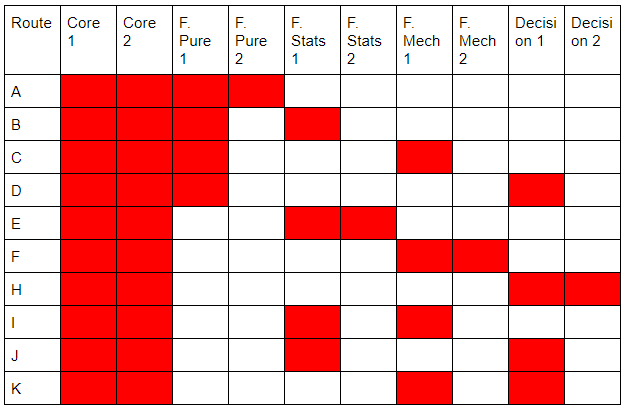A Level - Year 13 Book Now

For sixth form or As levels, students usually take 3 or 4 different subjects over a 2 year period starting for year 12, typically between the ages of 16 and 18. The educational system allows students to specialise in the subjects of their choice at A Level and the universities like A Levels as they provide the depth required for UK degree courses.
The new A Level reforms place an increased emphasis on the performance in an exam as there will be little coursework and few opportunities for resits.
For most subjects this already means that students will only be examined at the end of their two-year course and AS Levels – Year 12 will no longer count towards the final A Level – Year 13 grade but rather stand-alone from the final A Level, having been ‘decoupled.’
The other notable change is a reduced emphasis on coursework. Now simply referred to as ‘non-exam assessment’ the reforms will see a drop in this form of assessment as the new principle is that if it’s possible for something to be assessed through formal examination then it will be. The practical work, in Science, will be a practical endorsement, which must be passed but will not contribute to the final A-Level grades awarded.
The new A levels will be graded with the same A* to E pass marks as previously used.
Subjects: At Champs Learning, we have tuitions for following subjects for As levels – Year 13
1. Maths
2. Further Maths
3. Chemistry
4. Biology
5. Physics
6. Mechanics
Class Format:
We have both options available for these
tuitions; group as well as one to one. For
classroom sessions, we have small groups of
students.
The tuitions can be offered in both setting,
classroom as well as online.
Teachers: The teachers are the expert in their subjects and have a wonderful success record with students. Most of the teachers are working with schools and carry good number of years teaching experience.
Success: Champs Learning is proud for the great success of all our students. Each student at Year 12, has witnessed good academic progress with his subjects’ grades.
Pure Math
-
Algebraic Methods
-
Functions & Graphs
-
Sequences & Series
-
Binomial Expansion
-
Radians
-
Trigonometric functions
-
Trigonometry & modelling
-
Parametric equations
-
Differentiation
-
Numerical methods
-
Integration
-
Vectors
Applied Maths
-
Regression Correlation & Hypothesis Testing
-
Probability
-
Normal Distribution
-
Moments
-
Forces & Friction
-
Projectiles
-
Applications of Forces
-
Further Kinematics
Mandatory Modules
Further Core Pure Maths
-
Proof
-
Complex numbers
-
Matrices
-
Further algebra and functions
-
Further calculus
-
Further vectors
-
Polar coordinates
-
Hyperbolic functions
-
Differential equations
Optional Modules
Further Pure Maths 1
-
Further Trigonometry
-
Further calculus
-
Further differential equations
-
Coordinate systems
-
Further vectors
-
Further numerical methods
-
Inequalities
Further Pure Maths 2
-
Groups
-
Further calculus
-
Further matrix algebra
-
Further matrix algebra
-
Further complex numbers
-
Number theory
-
Further sequences and series
Further Statistics 1
-
Discrete probability distributions
-
Poisson & binomial distributions
-
Geometric and negative binomial distributions
-
Hypothesis Testing
-
Central Limit Theorem
-
Chi Squared Test
-
Probability generating functions
-
Quality of test
Further Statistics 2
-
Linear Regression
-
Continuous probability distributions
-
Correlation
-
Combinations of random variables
-
Estimation, confidence intervals and test using a normal distribution
-
Other Hypothesis Tests and confidence intervals
-
Confidence intervals and tests using the t-distributions
Further Mechanics 1
-
Momentum and impulse
-
Work, energy and power
-
Elastic strings and springs and elastic energy
-
Elastic collisions in one dimension
-
Elastic collisions in two dimensions
Further Mechanics 2
-
Motion in a circle
-
Centres of mass of plane figures
-
Further centres of mass
-
Further dynamics
-
Further kinematics
Decision Mathematics 1
-
Algorithms and graph theory
-
Algorithms on graphs
-
Algorithms on graphs 2
-
Critical path analysis
-
Linear programming
Decision Mathematics 2
-
Transportation problems
-
Allocation (assignment) problems
-
Flows in networks
-
Dynamic programming
-
Game theory
-
Recurrence relations
-
Decision analysis
Combinations of Modules

-
Measurements and their errors
-
Particles and radiation
-
Waves
-
Mechanics and materials
-
Electricity
-
Further mechanics and thermal physics
-
Fields and their consequences
-
Nuclear physics
-
Astrophysics
-
Medical physics
-
Engineering physics
-
Turning points in physics
-
Electronics
-
Physical Chemistry
-
Organic Chemistry
-
Inorganic Chemistry
-
Biological molecules
-
Cells
-
Organisms exchange substances with their environment
-
Genetic information, variation and relationships between organisms
-
Energy transfers in and between organisms
-
Organisms respond to changes in their internal and external environments
-
Genetics, populations, evolution and ecosystems
-
The control of gene expression
Select Your Branch
Course Features
Maths
- Sessions per week : One
- Total no of sessions : 42
- Students per class : 3-5
Further Maths
- Sessions per week : One
- Total no of sessions : 42
- Students per class : 3-5
Physics
- Sessions per week : One
- Total no of sessions : 42
- Students per class : 3-5
Chemistry
- Sessions per week : One
- Total no of sessions : 42
- Students per class : 3-5
Biology
- Sessions per week : One
- Total no of sessions : 42
- Students per class : 3-5

